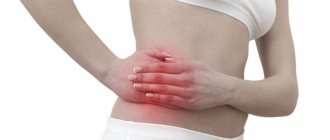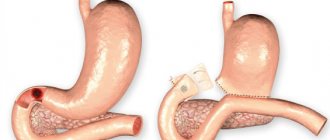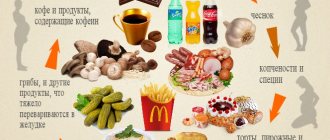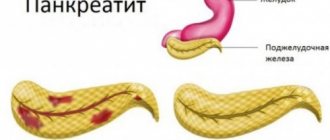Each of us has worried about chest pain, and if you experience such pain often, then do not put it off for long. You should call an ambulance immediately if the pain is unexplained, sudden, or severe.
The pain of a heart attack is caused when one of the arteries supplying the heart becomes blocked. In angina, similar chest pain occurs when these arteries are narrowed.
Heartburn is a burning, pain that is most often felt in the upper abdomen or lower chest. This is caused by stomach acid that travels back up the esophagus.
Heartburn and the pain of a heart attack can be similar. If you are unsure whether the pain is a heart attack or heartburn, you should call 911 immediately. If it is a heart attack, prompt medical attention can save your life.
What is a heart attack?
A heart attack is an event caused by coronary artery disease (disease in the coronary arteries). These blood vessels supply blood and oxygen to the heart.
When coronary artery disease reduces blood flow to part of the heart muscle, it is a heart attack. A heart attack can lead to cardiac arrest, resulting in loss of sensation and loss of pulse.
Symptoms of a heart attack:
Heart attacks often, but not always, follow the classic pattern:
- Pressure, compression, heaviness, severe pain in the chest;
- Feeling as if a heavy weight were pressing on the chest;
- The pain may come and go and last for several minutes;
Not all heart attacks have the same symptoms. Symptoms can be mild to severe, and some people experience no symptoms at all.
Typically, the pain is localized to one or both arms, neck, jaw, or upper or middle back.
A heart attack often occurs with the following symptoms:
- Breaks out into a cold sweat;
- Lack of oxygen;
- Feeling like a sick person;
- Vomit;
- Fatigue;
- Dizziness;
Older people and people with diabetes are usually susceptible to heart attacks.
Clinical manifestations
SIGN UP FOR A CONSULTATION by phone +7 (812) 951-7-951
Although GERD is one of the most common gastrointestinal diseases today, there is no consensus on how to describe the typical presentation of GERD. This is due to the fact that the disease manifests itself in various symptoms and there is no universal definition of this disease. GERD could be defined as a syndrome or clinical condition characterized by damage to the lining of the esophagus by gastric juices. However, such a definition is sufficient only in the case of GERD, accompanied by the development of reflux esophagitis, which is not always the case. Testing acid levels in a clinic can help identify pathological acid reflux, but the sensitivity of the esophageal mucosa to acid varies from person to person. Therefore, to determine the disease, it is important that patients have a set of certain symptoms.
Typical symptoms
Most often, patients with GERD complain of heartburn , sour belching and dysphagia (difficulty swallowing).
Heartburn is a feeling of discomfort or burning behind the sternum, spreading upward from the epigastric (epigastric) region, sometimes radiating to the neck area. Heartburn appears periodically, most often an hour after eating, during physical activity, when tilting the body or in a horizontal position. Usually, to relieve (stop) heartburn, it is enough to drink water; you can stop heartburn by taking antacids (substances that neutralize the effect of acid). However, attacks of heartburn can recur quite often and disrupt a normal lifestyle. Heartburn that occurs more than three times a week significantly impairs the quality of life. Although there is some relationship between the incidence of heartburn, the duration of esophageal clearance and the presence or absence of damage to the esophageal mucosa, this relationship is not clear-cut. Some patients with severe esophagitis, and even those with Barrett's esophagus, may not complain of heartburn .
Causes of heartburn:
- Consumption of certain foods and drinks reduces the tone of the lower esophageal sphincter. These include: chocolate, products containing peppermint, fatty foods, alcohol and caffeine-containing drinks (coffee, black tea, Coca-Cola, etc.).
- Heartburn sometimes occurs in certain body positions: when bending over and in a horizontal position (when you lie or sleep).
- Heartburn can be caused by any condition in which there is an increase in pressure in the abdominal cavity, which contributes to the backflow of gastric juice and food masses from the stomach into the esophagus: physical strain, heavy lifting, coughing, tight clothing, obesity and pregnancy (due to an enlarged uterus).
- Concomitant diseases can contribute to the appearance of heartburn: hiatal hernia, diabetes, autoimmune diseases (rarely encountered: Raynaud's syndrome, scleroderma, etc.).
- The use of certain medications leads to dysfunction of the lower esophageal sphincter: some drugs to lower blood pressure, heart medications, as well as drugs for the treatment of bronchial asthma containing theophylline (Teopek, Theotard, etc.).
- Many substances can irritate the lining of the esophagus, contributing to heartburn: spicy foods, citrus fruits and juices, tomatoes and tomato sauces, cigarette smoke, aspirin, ibuprofen and medications for the treatment of osteoporosis.
Symptoms and complications
Heartburn is a burning sensation behind the breastbone. This sensation can occur in the epigastric region and spread upward, as well as into the throat, jaw, arms or back. This sensation is very similar to the pain experienced during a heart attack. Therefore, if you experience severe chest pain (especially for the first time, when you still cannot accurately determine from the sensations that it is heartburn), you should immediately consult a doctor.
Heartburn usually occurs
reduce the feeling of heartburn by changing your body position (standing up), swallowing saliva or drinking water, as well as taking antacids (Maalox, Almagel, a simple baking soda solution helps many).
- Regurgitation . Occurs when a small amount of gastric juice enters (passively flows) into the mouth, resulting in a bitter or sour taste in the mouth. Most often, regurgitation appears after eating in a lying position (including during sleep), when tilting the body or straining. Frequent exposure to acid in the mouth can cause damage to tooth enamel.
- During regurgitation, gastric juice can also enter the respiratory tract, which can cause bronchial asthma, hoarseness, persistent cough, and sore throat. This may cause a sensation of a lump in the throat.
- When acid is exposed to the lining of the esophagus for a long time, it can cause serious damage. In this case, difficulty swallowing (dysphagia) may occur, and in severe cases, loss of weight and fluid in the body (this is also due to the fact that the person tries to avoid eating too much, as this causes an attack of heartburn and difficulty swallowing). In rare cases, the esophagus may be damaged to such an extent that bleeding may occur. Then vomiting with blood or blood-stained stool appears (looks like black, tarry).
Treatment for heartburn is usually the same as for reflux disease, since heartburn is most often caused by the presence of this particular disease. For recommendations on lifestyle and nutritional changes, see also this section.
GERD – When is it necessary to see a doctor urgently?
If heartburn attacks recur despite lifestyle changes and the use of antacids; and also if heartburn occurs more than three times a week over the past 2 weeks.
In the following cases, immediate medical attention is required (call an ambulance):
- Vomiting blood or dark, tarry stools.
- When sharp, intense chest pain occurs, accompanied by dizziness or impaired consciousness.
- Difficulty swallowing.
- Dehydration (determined by symptoms: decreased elasticity and dry skin, dry mouth, pointed facial features).
- Unreasonable weight loss.
Regurgitation is the passive flow of esophageal or stomach contents into the pharynx, not accompanied by nausea or vomiting. Patients note that acidic or burning liquid, sometimes with the remains of undigested food, gets into the throat or mouth. Belching, bending over, or any movement that increases intra-abdominal pressure can trigger regurgitation.
Up to 30% of people with GERD may experience dysphagia. The occurrence of this symptom can be provoked by strictures of the esophagus, impaired peristalsis, inflammation of the mucous membrane of the esophagus, and dysphagia can also appear after surgery on the esophagus. Sometimes dysphagia appears for no apparent reason, which can be explained by the presence of an individual reaction to certain muscle contractions during esophageal peristalsis.
Other less common symptoms include a feeling of increased saliva in the mouth, a feeling of a lump in the throat, and odynophagia (pain when food or liquid passes down the esophagus).
The feeling of increased saliva in the mouth is the result of a reflex associated with the vagus nerve, which occurs due to the effect of acid on the mucous membrane of the esophagus.
The sensation of a lump in the throat is a feeling of a foreign body in the throat that occurs regardless of the act of swallowing.
Odynophagia more often occurs in the presence of esophagitis that has developed as a result of taking medications or infection, therefore, in the presence of odynophagia, the diagnosis of reflux esophagitis requires additional confirmation. If odynophagia appears in a patient with GERD, then, as a rule, this indicates the presence of an esophageal ulcer or deep erosion.
Atypical (rare) symptoms
Laryngitis . In 1968, it was first discovered that pathological reflux can cause damage to the mucous membrane of the larynx and may be accompanied by prolonged hoarseness, redness and swelling of the larynx, ulceration of the vocal cords and the formation of nodules on them. From 4% to 10% of patients with reflux disease turn to an otolaryngologist (ENT doctor) with characteristic complaints, and laryngitis occurs twice as often in patients suffering from esophagitis. Studies involving repeated acid measurements have shown that laryngitis due to GERD is caused by acid reflux into the upper esophagus and subsequent acid reflux into the larynx.
Bronchial asthma . Back in 1892, it was suggested that GERD was related to bronchial asthma, based on observations when patients with overdistension of the stomach heard wheezing in the lungs. Subsequently, this hypothesis was confirmed by research. Symptoms of GERD are observed in 80% of patients with bronchial asthma. Although it was subsequently discovered that acid reflux into the esophagus has only a minor effect on lung function, treatment of GERD helps to reduce asthma symptoms in such patients.
Cough . Chronic cough occurs in many diseases, but 80-90% of cases occur in bronchial asthma, GERD and a disease in which there is a constant release of mucus from the nose, flowing into the throat and causing irritation. With GERD, chronic cough occurs in 10-40% of cases, and may be the only symptom, which makes diagnosis difficult. According to research, the occurrence of cough with GERD may be associated with acid irritation of the nerve endings in the esophagus, which increases the activity of the cough center in the brain - a reflex occurs.
Chest pain not associated with heart disease. In almost 30% of patients who undergo a study of the heart vessels for complaints of chest pain, the heart vessels turn out to be normal. After the presence of heart disease is excluded in such patients, an examination of the esophagus is performed. These chest pains were initially thought to be caused by esophageal dysmotility, such as widespread esophageal muscle spasm or nutcracker syndrome. However, manometry showed that chest pain had little connection with impaired contractile activity of the esophagus. At the same time, measuring acidity in patients with complaints of chest pain in the absence of heart disease confirmed the presence of increased acidity in the esophagus. These data suggested that chest pain not associated with heart disease was due to reflux. The mechanism of occurrence of these pains remains unclear.
So, the main symptoms
- Heartburn.
- Chest pain lasting more than 2 hours.
- Heartburn tends to get worse after eating.
- Lying down or wearing tight clothing can trigger or worsen heartburn.
- The appearance of pain or its intensification has nothing to do with physical activity.
- Not all patients with GERD experience heartburn.
Other symptoms:
- Regurgitation, which occurs more often during sleep or bending over.
- Unpleasant taste in the mouth.
- Constant dry cough.
- Hoarseness of voice.
- Feeling of a lump in the throat.
- Attacks of difficult noisy breathing.
The most common symptoms in children:
- Repeated vomiting.
- Cough.
- Difficulty breathing, asthma attacks, pneumonia.
Share link:
What is heartburn?
Heartburn is a symptom, not a disease. Heartburn is a sensation, usually of acute pain. Heartburn has nothing to do with the heart.
The stomach produces mucus to protect its lining from acid, which helps in digestion. The esophagus lacks this protection, so heartburn damages the mucous membrane. For many people, however, heartburn doesn't cause as much damage.
Heartburn symptoms
Heartburn creates a burning sensation in the esophagus. This burning type pain usually goes just above the stomach. Heartburn can also lead to nausea, flatulence, and belching.
Symptoms of pregnancy in the 1st week
The first signs of pregnancy are traditionally considered to be morning sickness, weakness, and fatigue. All of these are characteristic signs of toxicosis in pregnant women, but it is wrong to expect them to occur from the very first days after conception. Often these “symptoms” appear much later, already from the third or even fourth week of pregnancy.
Oddly enough, at the first stage the body does not inform the woman that conception has already occurred. According to Maria Prokhorova, there are no specific symptoms that could identify pregnancy at this moment. The only sign is mild discomfort in the lower abdomen, which may occur closer to the seventh day after conception.
“The endometrium in the uterine cavity is ready for egg implantation,” the doctor continues. — Embryo implantation may be accompanied by minor discomfort, similar to uterine contractions. A small amount of bloody discharge may also occur. But usually these sensations occur in especially sensitive women. In most cases, egg implantation occurs completely unnoticed by the woman.”
During the same period, a special hormone appears in the body of the expectant mother. It's called human chorionic gonadotropin, or hCG for short. It is produced by the outer layer of the embryo, called the trophoblast. It is this hormone that informs a woman’s body about the fact of conception, and it also stimulates the onset of characteristic changes in the body. As long as hCG is not produced, despite the presence of a fertilized egg in the woman’s body, no changes occur in it. In rare cases, the first signs may appear as early as the second week after conception, but usually they appear in the third or fourth weeks.
pixabay.com/
Ultrasound and laboratory tests
Ultrasound is one of the important stages of the first screening of pregnant women, but it is not necessary to do it in the very first week after the expected conception. This research will not be informative yet. It will be needed later to track the stages of development of the baby, monitor his condition and the health of the expectant mother.
The only way to confirm conception in the early stages is a blood test for hCG. But since the production of this hormone does not begin from the first day of pregnancy, but only on the seventh or eighth, there is no need to donate blood immediately after the alleged conception. In the first week, even this analysis will not be informative.
No matter how much you would like to make sure that a happy event has already happened, this will not be possible in the first days after pregnancy. In just a week, it will be possible to confirm the guess through a laboratory blood test. For now, you just have to wait. Very soon the body will definitely answer the main question, and there will be no more doubts.











